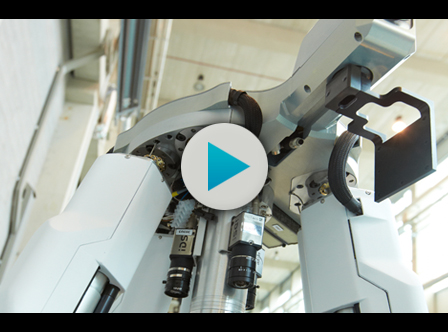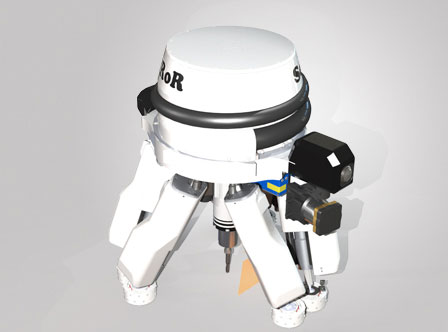PROJECTS
The mobile machine tool can be transferred autonomously by means of a system of six legs right to the place of work/operation to carry out inspection/machining processes.
The needs of large engineering and infrastructure companies have in recent years prompted Western machine-tool companies to produce increasingly bigger machines to be able to machine large-sized parts.
The mobile machine tool that IK4-TEKNIKER has developed within the European MiRoR project alongside universities, companies and R&D centres from across Europe and which it will be presenting at the Machine Tool Biennial from 2 to 7 June is a new concept that constitutes a paradigm change.
This paradigm seeks to end the dogma of “large machines around and for large parts” in favour of new, small-sized machine tools that can be transported right to the location of the part in service and which can be freely positioned on the part in order to carry out machining work of a quality equivalent to that of the large machines.
These small, intelligent machines, which are taken to the part and are free to move around and work on it, are conventionally called mobile machines and are the basis of the fresh approach “small machines on large parts”.
The mobile machine can be transferred autonomously by means of a system of six legs right to the place of work/operation to carry out inspection/machining processes (deposition of material, elimination of material, etc.) by making use of the parallel kinematics of the hexapod itself. The precision that can be expected is better than that of a tenth of a millimetre.
It also has applications in large infrastructure projects, and also in tasks in restricted or hazardous environments; it is designed to work mainly in industrial sectors relating to energy like nuclear power stations or gas and oil production plants and the aircraft industry. In fact, a prototype is already working in an industrial plant manufacturing Rolls Royce aircraft engines in the United Kingdom.
Intelligent control
The mobile machine tool can have a semi-rigid robot arm that enables it to access very tight spaces. Thanks to its system that can make segments of the arm rigid, the robotic arm is able to carry out inspection and machining tasks in inaccessible places.
The conjunction of the two systems (six legs and a semi-rigid arm) is controlled by a system on three levels: low level control for the machining processes, intermediate level control for the movement of the robot in the work environment, and high level control that provides the system with intelligence.
The intelligent control allows the robot to carry out a broad range of navigation functions, like location and overall planning of itineraries, as well as calibration in the machining and the obtaining of an optimum positioning of the robot’s feet.






